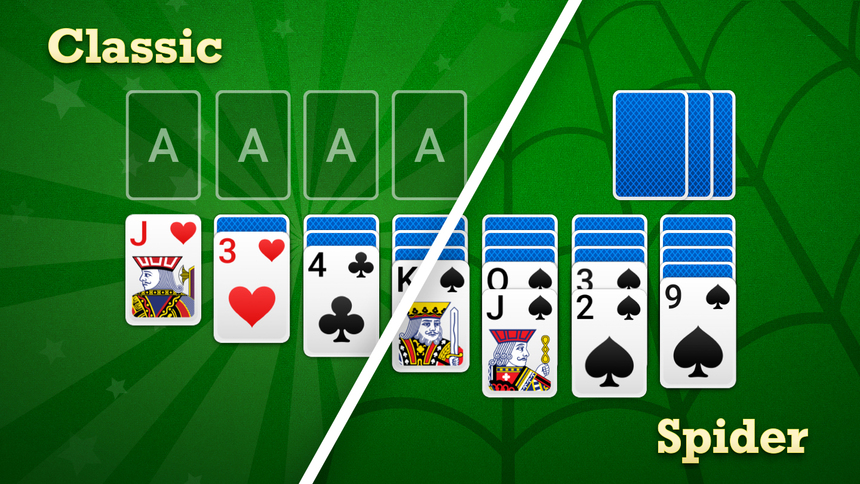Exploring the Differences: Classic Solitaire VS Spider Solitaire

Solitaire is a popular card game enjoyed by millions around the world. While Classic Solitaire has long been a favorite, Spider Solitaire has also gained significant popularity. In this article, we delve into the key differences between these two variations of the game, highlighting their unique features and gameplay mechanics.
- Number of Decks:
Classic Solitaire, also known as Klondike Solitaire, typically uses a standard deck of 52 cards. The cards are shuffled and dealt into tableau columns and a foundation, where the objective is to build ascending sequences by suit.
Spider Solitaire, on the other hand, is played with two decks of 52 cards each, resulting in a total of 104 cards. The cards are initially dealt into ten tableau columns, with some face-down and others face-up.
- Tableau Layout:
In Classic Solitaire, the tableau consists of seven columns, with the first column containing one card, the second containing two cards, and so on. The top card of each column is face-up, while the remaining cards are face-down. Players can move cards between columns to build sequences and reveal hidden cards.
Spider Solitaire features ten tableau columns, with each column initially containing one face-up card and a stack of face-down cards. As the game progresses, players can build sequences in descending order, regardless of suit, and can move fully packed columns to create new opportunities for card placements.
- Building and Stacking Rules:
Classic Solitaire follows the standard rules of building ascending sequences in the foundation piles. Players aim to organize the cards by suit, starting with Ace and ending with King.
Spider Solitaire introduces a different approach. Players can build descending sequences of cards in the tableau, regardless of suit. When a full sequence from King to Ace is formed, it is automatically removed from the tableau, creating space for further moves.
- Difficulty and Strategy:
Classic Solitaire offers a moderate level of difficulty, with a focus on strategic decision-making, managing card movements, and uncovering hidden cards strategically. It requires careful planning and skillful play to successfully complete the game.
Spider Solitaire presents a higher level of difficulty due to the increased number of cards and complex tableau layout. Players need to carefully consider moves, plan ahead, and strategically use empty columns to their advantage. It offers a greater challenge for those seeking a more intricate gameplay experience.
While both Classic Solitaire and Spider Solitaire share the same foundation of a captivating solitaire experience, they differ in terms of deck count, tableau layout, building rules, difficulty, and strategic elements. Classic Solitaire is a timeless favorite game with its straightforward gameplay, while Spider Solitaire offers a more complex and challenging twist. Whichever variation you choose, Solitaire remains a beloved game that provides endless entertainment and a chance to sharpen your card-playing skills.


